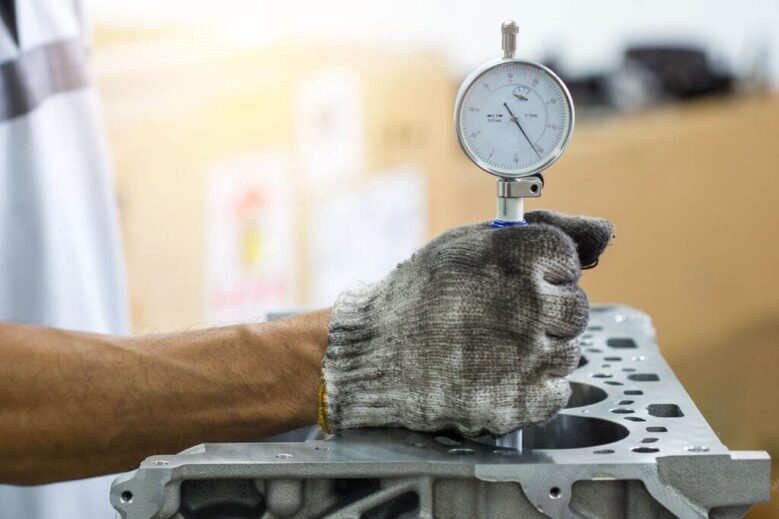The level of complexity in setting a dial bore gage all comes from the method you have chosen to use. This guide will cover the processes for setting a dial bore gage and the advantages and disadvantages of each method.
Knowing how to accurately set a dial bore gage is an important skill for any machinist or metrologist.
Setting the dial bore gage for an accurate reference point
In general, the process of setting a dial bore gage is important to maintain an accurate reference point of zero. The reference contact on a dial bore gage is used to set the nominal size. And when the gage has been properly set, it will produce a reading of zero when measuring that nominal size.
In other words, you need a zero point from which you measure beyond. Setting the zero point or the nominal size can be accomplished via a number of methods.
Method 1 for setting a dial bore gage: Using a micrometer
A common way to set a dial bore gage involves using an outside micrometer. The steps to do this are:
- Set your micrometer to the size of the bore you are testing
- Using the extensions needed for the specific bore diameter, set up your dial bore gage with the proper extensions
- Put your gage between the micrometer spindle and anvil
- Using a rocking motion, settle the gage into the micrometer
- Zero the indicator to the minimum reading and that is your nominal size
This method is the fastest and most convenient method, given the availability of the tools involved.
However, when using a micrometer to set your dial bore gage, you run the risk of including the measurement errors of the micrometer itself. You also risk misaligning the spherical measuring points of the gage to the micrometer.
Method 2 for setting a dial bore gage: Using a master ring
Another way to set a dial bore gage is to use a master ring. The steps to do this are:
- Lay your master ring on a smooth, hard surface, like a granite surface plate
- Set your bore gage in the ring, thus supporting it
- Adjust the sensitive contact point of your bore gage until the indicator reads zero
The main benefits of this method:
- The actual measurement goal is duplicated
- The master rings are easily made to closely match the size of a part
The disadvantage of using master rings to set your dial bore gage is that they’re expensive tools. Collecting one for each of the potential bore sizes you need could become costly.
Method 3 for setting a dial bore gage: Using a gage block assembly
A third method of setting a dial bore gage involves the use of a gage block assembly. By setting gage blocks into a clamp with jaws at both ends, you can create a highly accurate reference master by which to set your gage.
Gage blocks are readily available, and most workshops or warehouses will already have them on hand. Additionally, gage blocks provide multiple sizes, which offer more flexibility of measurement and cost savings.
The disadvantage of using gage blocks to set your dial bore gage is the time it takes to assemble the gage blocks to match the required nominal size or zero point. You also run the risk of having potential errors resulting from the wringing process that may be tricky to pick up on.
Reminders for getting the best accuracy
Whatever method or tools you use when setting a dial bore gage, there are some key concepts to keep in mind.
Make sure your tools are clean from dust and debris. Any small intrusion can have ramifications on the accuracy of your zero point. When done well, accuracy can be 0.0001inch to the nominal size.
Consider the tools you have available, the funds you’re willing to spend, and any individual preferences or skills when choosing the best way to set your dial bore gage.

